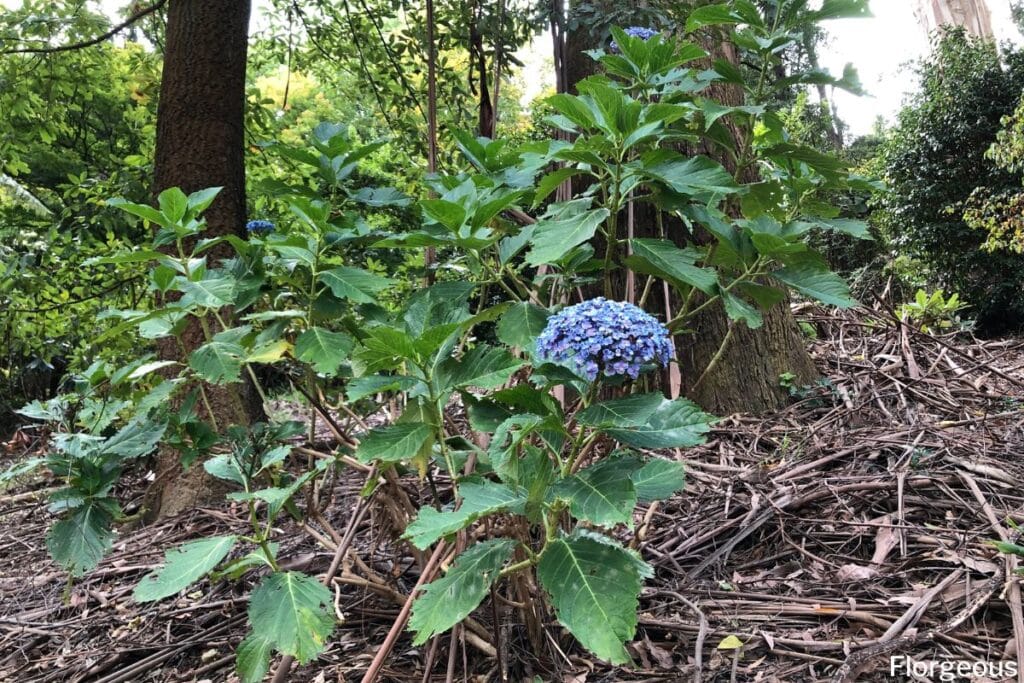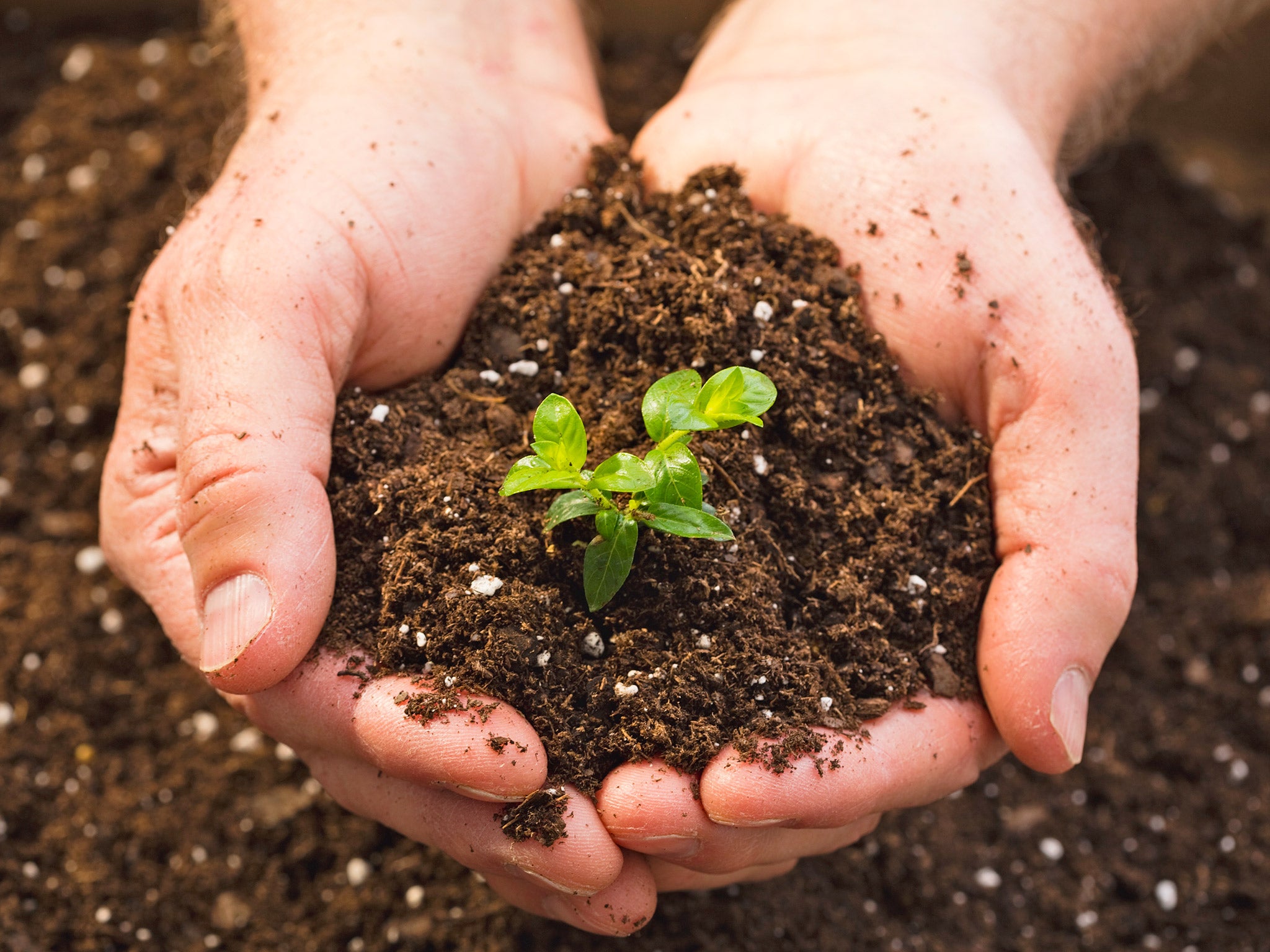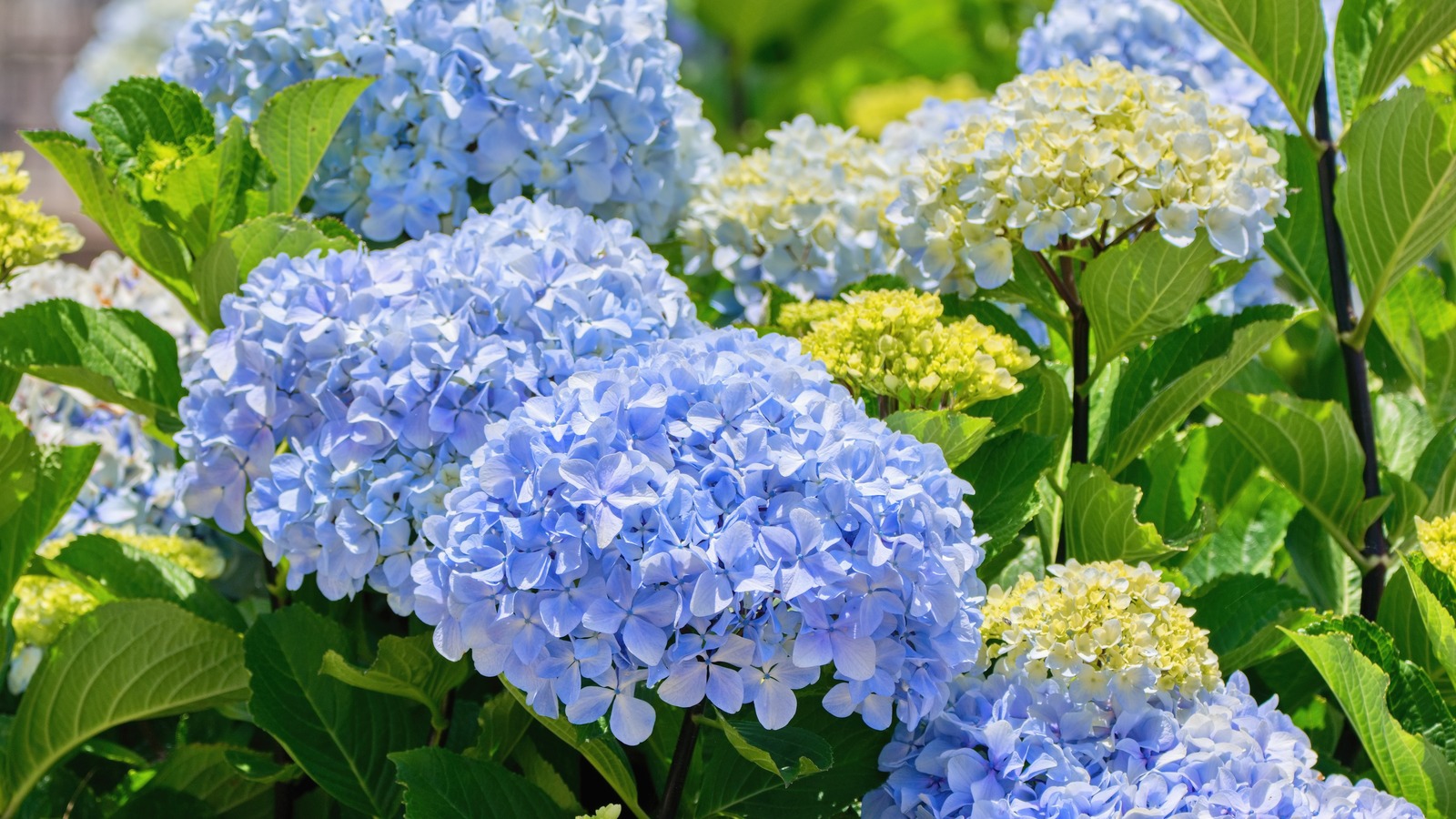Understanding Hydrangea Soil Requirements
Hydrangeas are one of the most popular flowering shrubs in gardens, but they can be finicky when it comes to soil. To ensure these beautiful plants thrive, it’s essential to understand their specific soil needs. So, what soil do hydrangeas like? The answer lies in creating a well-balanced mix that meets their unique requirements.
Hydrangeas prefer a slightly acidic to neutral soil pH, ranging from 6.0 to 7.0. This allows them to absorb the necessary nutrients for healthy growth and blooming. A soil pH outside of this range can lead to nutrient deficiencies, affecting the plant’s overall health and appearance.
In addition to pH, hydrangeas require a soil mix that is rich in organic matter. This includes ingredients like compost, manure, and leaf mold, which improve soil structure, fertility, and overall health. Organic matter also helps to retain moisture, reducing the need for frequent watering.
Hydrangeas also benefit from good drainage and aeration in the soil. This can be achieved by incorporating ingredients like perlite, vermiculite, or sand, which improve soil structure and prevent waterlogging. Proper drainage and aeration also help to prevent root rot and other problems associated with poorly draining soils.
While hydrangeas have specific soil needs, they are adaptable to different soil types. However, they do not perform well in soils with extreme pH levels, poor drainage, or inadequate organic matter. By understanding these requirements, gardeners can create a soil mix that meets the needs of their hydrangeas, leading to healthy growth, vibrant blooms, and a beautiful display of color in the garden.
How to Create a Hydrangea-Friendly Soil Mix
Creating a soil mix that meets the needs of hydrangeas requires careful consideration of the right ingredients and their proportions. To answer the question of what soil do hydrangeas like, it’s essential to understand the importance of a well-balanced mix. A good starting point is to combine the following ingredients:
Peat moss: This acidic ingredient helps to lower the soil pH and retain moisture. Use 20-30% peat moss in your mix.
Compost: Rich in nutrients and organic matter, compost improves soil fertility and structure. Add 10-20% compost to your mix.
Perlite: This ingredient improves drainage and aeration, preventing waterlogging and root rot. Use 10-20% perlite in your mix.
Topsoil: A good quality topsoil provides a solid foundation for your mix, offering essential nutrients and minerals. Use 30-40% topsoil in your mix.
To create your mix, follow these steps:
1. Start by combining the peat moss, compost, and perlite in a large bucket or container.
2. Add the topsoil to the mix, stirring well to combine.
3. Adjust the pH of the mix as necessary, using lime or sulfur to achieve the optimal range of 6.0-7.0.
4. Moisten the mix with water, but avoid overwatering, which can lead to waterlogging and root rot.
By following these steps and using the right ingredients, you can create a hydrangea-friendly soil mix that meets the needs of these beautiful plants. Remember to monitor the pH and adjust as necessary to ensure optimal growth and blooming.
The Role of pH in Hydrangea Soil
Soil pH plays a crucial role in hydrangea growth and blooming. Hydrangeas prefer a slightly acidic to neutral soil pH, ranging from 6.0 to 7.0. This optimal pH range allows hydrangeas to absorb the necessary nutrients for healthy growth and blooming.
A soil pH outside of this range can lead to nutrient deficiencies, affecting the plant’s overall health and appearance. For example, a soil pH that is too high can cause iron deficiency, leading to yellowing leaves and reduced blooming. On the other hand, a soil pH that is too low can cause manganese toxicity, leading to stunted growth and leaf damage.
To determine the pH of your soil, you can use a soil testing kit or send a sample to a laboratory for analysis. If your soil pH is not within the optimal range, you can adjust it by adding lime to raise the pH or sulfur to lower it.
It’s essential to note that hydrangeas can tolerate a wide range of soil pH, but optimal growth and blooming occur within the 6.0 to 7.0 range. By understanding the importance of soil pH and taking steps to adjust it if necessary, you can create an optimal environment for your hydrangeas to thrive.
In addition to adjusting the soil pH, it’s also important to consider the type of hydrangea you are growing. Bigleaf hydrangeas, for example, tend to prefer a slightly more acidic soil pH, while panicle hydrangeas prefer a more neutral soil pH.
By understanding the specific needs of your hydrangea variety and adjusting the soil pH accordingly, you can create a soil environment that promotes healthy growth and blooming. Remember, the key to unlocking the secrets to hydrangea happiness is to provide the right soil conditions, including optimal pH, nutrient-rich soil, and proper drainage and aeration.
Organic Matter: The Key to Hydrangea Soil Success
Organic matter is a crucial component of hydrangea soil, playing a vital role in improving soil structure, fertility, and overall health. When it comes to what soil do hydrangeas like, incorporating organic matter is essential for creating a thriving environment.
Compost is one of the most effective organic matter ingredients for hydrangea soil. Rich in nutrients and beneficial microorganisms, compost helps to improve soil fertility, structure, and overall health. To incorporate compost into your soil mix, aim to add 10-20% compost by volume.
Manure is another valuable organic matter ingredient for hydrangea soil. High in nutrients and organic matter, manure helps to improve soil fertility and structure. However, it’s essential to use aged manure, as fresh manure can burn hydrangea roots.
Leaf mold is a lesser-known but highly effective organic matter ingredient for hydrangea soil. Made from decomposed leaves, leaf mold is rich in nutrients and beneficial microorganisms, helping to improve soil fertility and structure.
To incorporate these organic matter ingredients into your soil mix, follow these tips:
1. Start by adding a 2-inch layer of compost or manure to the bottom of your planting hole.
2. Mix in a 1-inch layer of leaf mold or other organic matter ingredients into the soil mix.
3. Avoid over-amending the soil, as this can lead to an overabundance of nutrients and harm hydrangea growth.
By incorporating organic matter into your soil mix, you can create a thriving environment for your hydrangeas. Remember, the key to unlocking the secrets to hydrangea happiness is to provide the right soil conditions, including optimal pH, nutrient-rich soil, and proper drainage and aeration.
Drainage and Aeration: Ensuring Healthy Hydrangea Roots
Proper drainage and aeration are crucial for healthy hydrangea roots. When it comes to what soil do hydrangeas like, ensuring good drainage and aeration is essential for creating a thriving environment.
Hydrangeas prefer well-draining soil that allows excess water to escape, preventing waterlogged soil and root rot. To achieve good drainage, consider adding perlite or vermiculite to your soil mix. These ingredients help to improve soil structure, allowing water to penetrate and drain freely.
Aeration is also essential for healthy hydrangea roots. When soil is compacted, it can prevent oxygen from reaching the roots, leading to stunted growth and poor blooming. To improve aeration, consider adding compost or other organic matter ingredients to your soil mix. These ingredients help to improve soil structure, allowing oxygen to penetrate and reach the roots.
To ensure good drainage and aeration, follow these tips:
1. Add a 2-inch layer of perlite or vermiculite to the bottom of your planting hole to improve drainage.
2. Mix in a 1-inch layer of compost or other organic matter ingredients into the soil mix to improve aeration.
3. Avoid compacting the soil, as this can prevent oxygen from reaching the roots.
4. Consider using raised beds or containers with good drainage holes to ensure excess water can escape.
By ensuring good drainage and aeration, you can create a healthy environment for your hydrangeas to thrive. Remember, the key to unlocking the secrets to hydrangea happiness is to provide the right soil conditions, including optimal pH, nutrient-rich soil, and proper drainage and aeration.
Common Soil Mistakes to Avoid with Hydrangeas
When it comes to creating the perfect soil for hydrangeas, there are several common mistakes to avoid. By understanding these mistakes, you can create a healthy environment for your hydrangeas to thrive.
One of the most common mistakes is using too much fertilizer. While fertilizers can provide essential nutrients, over-fertilizing can lead to weak and leggy growth, as well as reduced blooming. To avoid this mistake, use a balanced fertilizer at the recommended rate, and avoid fertilizing during the fall and winter months.
Another common mistake is neglecting to repot hydrangeas regularly. Hydrangeas prefer well-draining soil and can become pot-bound if not repotted every 2-3 years. To avoid this mistake, repot your hydrangeas in the spring, using a well-draining potting mix and a slightly larger pot.
Ignoring soil pH is another common mistake. Hydrangeas prefer a slightly acidic to neutral soil pH, and ignoring this can lead to nutrient deficiencies and poor growth. To avoid this mistake, test your soil pH regularly and adjust it if necessary to create an optimal environment for hydrangea growth.
Other common mistakes to avoid include:
1. Using poor-quality potting mix that lacks essential nutrients and organic matter.
2. Overwatering, which can lead to root rot and other problems.
3. Underwatering, which can lead to drought stress and reduced blooming.
4. Not providing enough sunlight, which can lead to weak and leggy growth.
By avoiding these common mistakes, you can create a healthy environment for your hydrangeas to thrive. Remember, the key to unlocking the secrets to hydrangea happiness is to provide the right soil conditions, including optimal pH, nutrient-rich soil, and proper drainage and aeration.
Real-World Examples of Hydrangea Soil Success
While every gardener’s experience is unique, there are many real-world examples of gardeners who have successfully grown hydrangeas in different soil types and conditions. By studying these examples, we can gain valuable insights into what works and what doesn’t when it comes to creating the perfect soil for hydrangeas.
One example is a gardener in California who grew a stunning bigleaf hydrangea in a container using a mix of peat moss, compost, and perlite. By providing optimal drainage and aeration, this gardener was able to create a healthy environment for the hydrangea to thrive.
Another example is a gardener in the Northeast who grew a beautiful panicle hydrangea in a raised bed using a mix of compost, manure, and leaf mold. By incorporating organic matter into the soil, this gardener was able to improve soil fertility and structure, leading to a robust and healthy hydrangea.
These examples demonstrate that with the right soil ingredients and techniques, gardeners can create a thriving environment for hydrangeas in a variety of conditions. By experimenting with different soil mixes and techniques, you can find the perfect combination for your specific hydrangea variety.
Some key takeaways from these examples include:
1. The importance of proper drainage and aeration in hydrangea soil.
2. The value of incorporating organic matter into the soil to improve fertility and structure.
3. The need to experiment and find the right soil mix for your specific hydrangea variety.
By following these tips and studying real-world examples of hydrangea soil success, you can create a healthy and thriving environment for your hydrangeas.
Conclusion: Creating the Perfect Soil for Your Hydrangeas
Creating the perfect soil for your hydrangeas requires careful consideration of several key factors, including soil pH, organic matter, drainage, and aeration. By understanding the specific needs of your hydrangea variety and incorporating the right ingredients and techniques into your soil mix, you can create a healthy and thriving environment for your plants.
To summarize, the key takeaways from this article are:
1. Hydrangeas have specific soil needs that differ from other plants, and meeting these needs is crucial for optimal growth and blooming.
2. Soil pH is critical for hydrangea growth, and testing and adjusting pH levels as necessary is essential.
3. Organic matter, including compost, manure, and leaf mold, is essential for improving soil structure, fertility, and overall health.
4. Proper drainage and aeration are crucial for healthy hydrangea roots, and incorporating ingredients like perlite and vermiculite can help achieve this.
5. Avoid common mistakes like using too much fertilizer, neglecting to repot, and ignoring soil pH to create a healthy environment for your hydrangeas.
By following these tips and experimenting with different soil mixes and techniques, you can find the perfect combination for your specific hydrangea variety and create a thriving environment for your plants.
Remember, the key to unlocking the secrets to hydrangea happiness is to provide the right soil conditions, including optimal pH, nutrient-rich soil, and proper drainage and aeration. With a little patience and experimentation, you can create a stunning display of hydrangea blooms that will be the envy of all your friends and neighbors.








